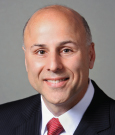The National Comprehensive Cancer Network (NCCN) has always prided itself on its commitment to evidence-based, expert consensus–driven recommendations for cancer care, with a special focus on breaking down the barriers that contribute to disparities in outcomes across all patients with cancer. With that mission in mind, on September 10, 2024, experts assembled in Washington, DC, to participate in the NCCN Oncology Policy Summit: Advancing Diversity, Equity, and Inclusion in the Cancer Workforce. During the first panel discussion, experts with varied perspectives and experience thoughtfully discussed the many facets of diversity, equity, and inclusion (DEI), why it is integral to the oncology workforce as well as vital for patients with cancer, and how to know when an institution has taken the necessary steps to integrate practice strategies to improve the inequities in cancer care.
Dimensions of Diversity
Panel moderator Clifford Goodman, PhD, a consultant in health care technology and policy, opened the discussion by acknowledging the highly sensitive (and even political) issues surrounding the topic of DEI and the various challenges at play for its integration. He then asked the panel members to explore the many facets of diversity in the health-care workforce.

Clifford Goodman, PhD

Terrance Mayes, EdD
Terrance Mayes, EdD, began by making a distinction between the terms diversity, equity, and inclusion. “Labels don’t matter so much, but the language does,” he commented. Dr. Mayes is Associate Dean for Equity and Strategic Initiatives and Executive Director, Commission on Justice and Equity at Stanford University as well as Chair of the NCCN DEI Director Forum.
“Diversity at its core means different,” he added, citing the benefits associated with working with mosaic individuals, with a variety of backgrounds and perspectives. Inclusion centers on the comfort level of individuals to be seen and heard. And equity focuses on the tools and structures necessary for people to show up as their true selves and reach their highest potential. “Diversity is a fact, inclusion is a necessity, and equity is the goal,” Dr. Mayes succinctly stated.

Rodney O. Tucker, MD, MMM

Lauren Wall, MS, MSc
For Rodney O. Tucker, MD, MMM, another component of diversity centers on going beyond what a person looks like to assess lived experiences, including such items as generationality, religion, first to college, ability/disability status, disadvantaged backgrounds, sexual orientation and gender identity. “We all share a lived experience, and by looking at it this way, we then bring more people into the conversation,” he explained. Dr. Tucker is Associate Director for Access, Belonging, and Culture at O’Neal Comprehensive Cancer Center at the University of Alabama at Birmingham.
Lauren Wall, MS, MSc, also concurs with Dr. Mayes and Dr. Tucker regarding diversity’s crucial role in the health-care (and particularly oncology) workforce. “You would think that every organization would want a workforce that is creative and innovative and bring new perspectives,” she mentioned. Ms. Wall is Senior Director of the Cancer Clinical Trials Support Office at the University of Chicago.

Danielle MItchell

Amy Garrett, DrPH, MA, ACRP-CP
Danielle Mitchell, Chief Executive Officer and founder of Black Women in Clinical Research in Detroit, has helped more than 1,000 members secure jobs in clinical research and also believes in the importance of hearing diverse voices. “When we can have those tough conversations, then we can get to a point where we can open the curtains and see what we can do to improve what we are trying to accomplish. It is so important that we collectively come together,” she stated.
For Amy Garrett, DrPH, MA, ACRP-CP, it is important not to forget how a person feels when talking about diversity in the workforce. “We need to create psychologically safe workspaces that allow people to bring their best selves,” she declared. Dr. Garrett is Associate Principal Scientist in Oncology Clinical Operations at Merck & Co, Inc. Employees should not be fearful of retaliation or judgment, she added.
Importance of Diversity: For Professionals, Patients, Research, and Business
The panel explored why diversity matters to all stakeholders—from health-care professionals and the patients they care for to clinical researchers and even to those in charge of ensuring the profitability of their businesses. For Dr. Tucker, this goes beyond just physicians to include advanced practice nurses and even office personnel. A diverse health-care workforce will help many patients and families feel more comfortable about their care experience. “A workforce that encourages and has diverse perspectives and lived experiences comes out with a better product,” he added.
Ms. Wall added another perspective on the benefits of diversity in the workforce. “Practices that create an environment of inclusiveness help with recruitment and retention” of qualified employees.
However, the benefits of diversity represent more than just making patients feel comfortable. According to Dr. Mayes, “people die without inclusion,” and outcomes are “tremendously improved” with racial concordance between provider and patient. Study data have shown that for various reasons, Black men and woman are more likely to die of their cancer than their White counterparts, he noted. “At the end of the day,” he added, “we are talking about real lives.”
Turning to the benefits of diversity in terms of study enrollment, the panel shared their perspectives on how to broaden the scope of those who participate in clinical trials. In Ms. Mitchell’s experience, many physicians simply do not have the time or staff to have discussions with their patients about enrolling in clinical trials. Thus, she suggests, it is necessary to go beyond the physician’s office and into the community to have these conversations.
“Diverse professionals recruit diverse patients,” she said. In all honesty, Ms. Mitchell admitted, lots of these questions are not being answered in the community. However, safe environments for people to have conversations about their health needs include places such as churches and even barber shops, she added.
Ms. Wall also weighed in on the value of having diverse participants in cancer clinical trials. “Drugs impact individuals differently, so having diversity in clinical trial enrollment is important for understanding the efficacy of certain drugs,” she explained.
Dr. Mayes shared another strategy for encouraging members of underserved and underrepresented communities to enroll in clinical trials. At Stanford, a community outreach officer who lives and works in the community was hired, with a goal of building trust. “You have to go into the community with people who reflect the community,” he stated.
As for sponsors of clinical research, Dr. Garrett shared how her company sees diversity, inclusion, and equity as a means to further its research agenda. “Merck is committed to DEI efforts,” she noted. In fact, she agrees with the panel members about the need to reach to diverse communities about joining cancer research. “We have to think about the populations we are working with; they are not monolithic,” she said. “What one community wants may not be what another community wants.”
One last comment on improving diversity in clinical trial research focuses on the structure of the trial itself. According to Dr. Tucker, including aspects of community-based history research is key, as is looking closely at both inclusion and particularly exclusion criteria.
Dr. Goodman asked the panel why they think DEI is good for the bottom line from a business perspective. According to Dr. Garrett, an organization is only as good as its people. “Patients come first; profit after that, advanced goals next. Without DEI, there is no bottom line, there is no advancement,” she noted. In addition, access to cancer medications is another key element. “Medicines are nothing if they do not reach people,” she declared.
In terms of fiscal viability at Stanford, Dr. Mayes commented: “Stanford Medicine is mission-driven but people-powered. The human capital is far and away the largest part of our budget. Turnover is very, very expensive.”
What Does Success Look Like?
How can you tell if DEI efforts are being successful, asked Dr. Goodman. For Ms. Wall, it starts at the top. “If leadership is prioritizing DEI, it is a huge step in the right direction, and it trickles down,” she commented. Another sign of a success, for Dr. Tucker, is “when people ask questions or disagree in an open, psychologically safe place.”
Dr. Mayes agrees with Ms. Wall completely. “An explicit, visible, leadership commitment to this work is a sign that the organization is moving in the right way,” In fact, Stanford has added a DEI metric to its budget, in an effort to track and hold individuals accountable for DEI efforts, he shared.
As for Ms. Mitchell, a clear sign that the efforts are working are the success stories of those she works with. “We need to have more companies willing to allow entry-level people into a company and training for those in search of a second career,” she proposed. “We have to change the way we are looking at talent and transferable skills.”
Finally, the panel agreed that getting younger people in underrepresented populations excited about science and medicine helps to cultivate the next generation of workers in health care (and oncology). “We need to start younger, in middle school,” noted Dr. Garrett, who would like to see more programs, academic centers, and industry devoting more money to such efforts.
Ms. Wall shared these comments on similar steps being taken at her institution: “At the University of Chicago, we are dedicated to hiring and training a diverse workforce that represents the community we serve. One of our strategies includes partnering with our local community colleges, City Colleges of Chicago, to build internships and apprenticeships within the field of clinical research, thus exposing students to exciting career opportunities.”
DISCLOSURE: All panelists reported no conflicts of interest.

